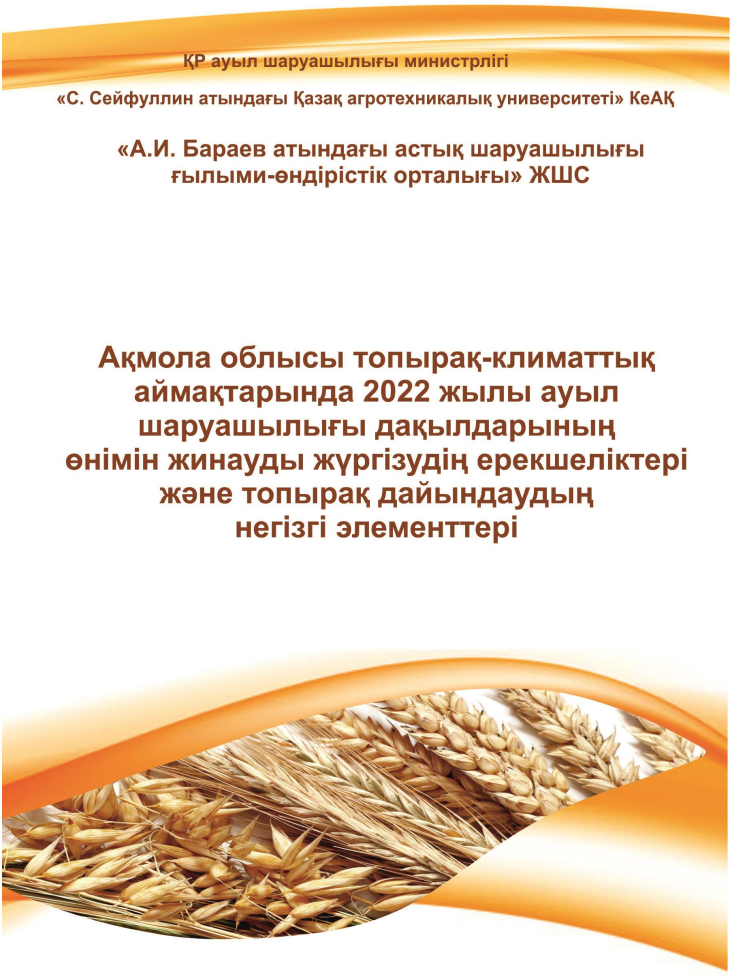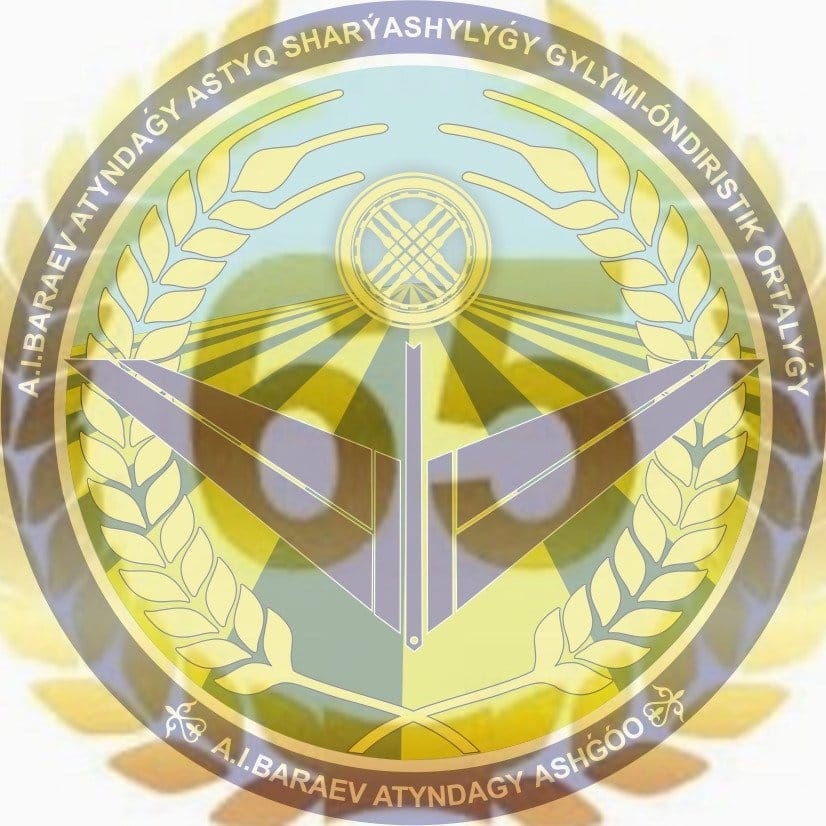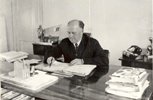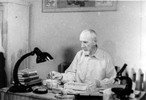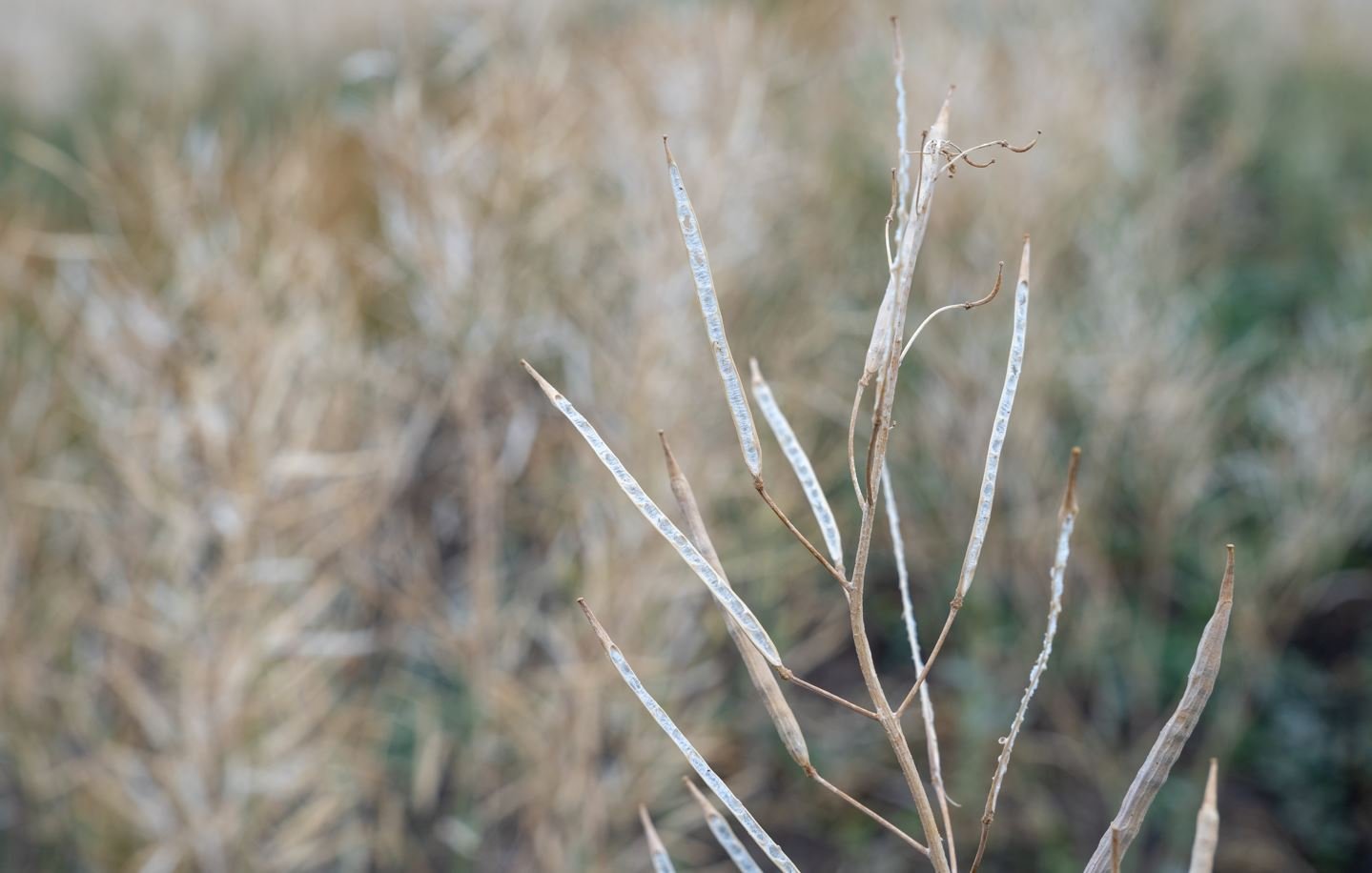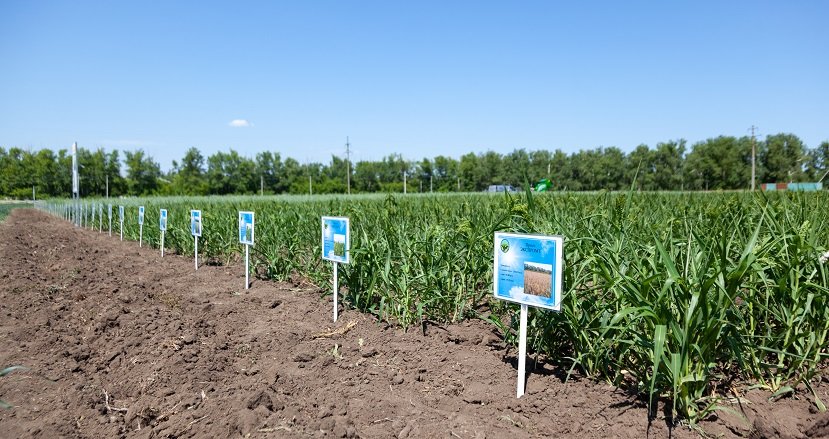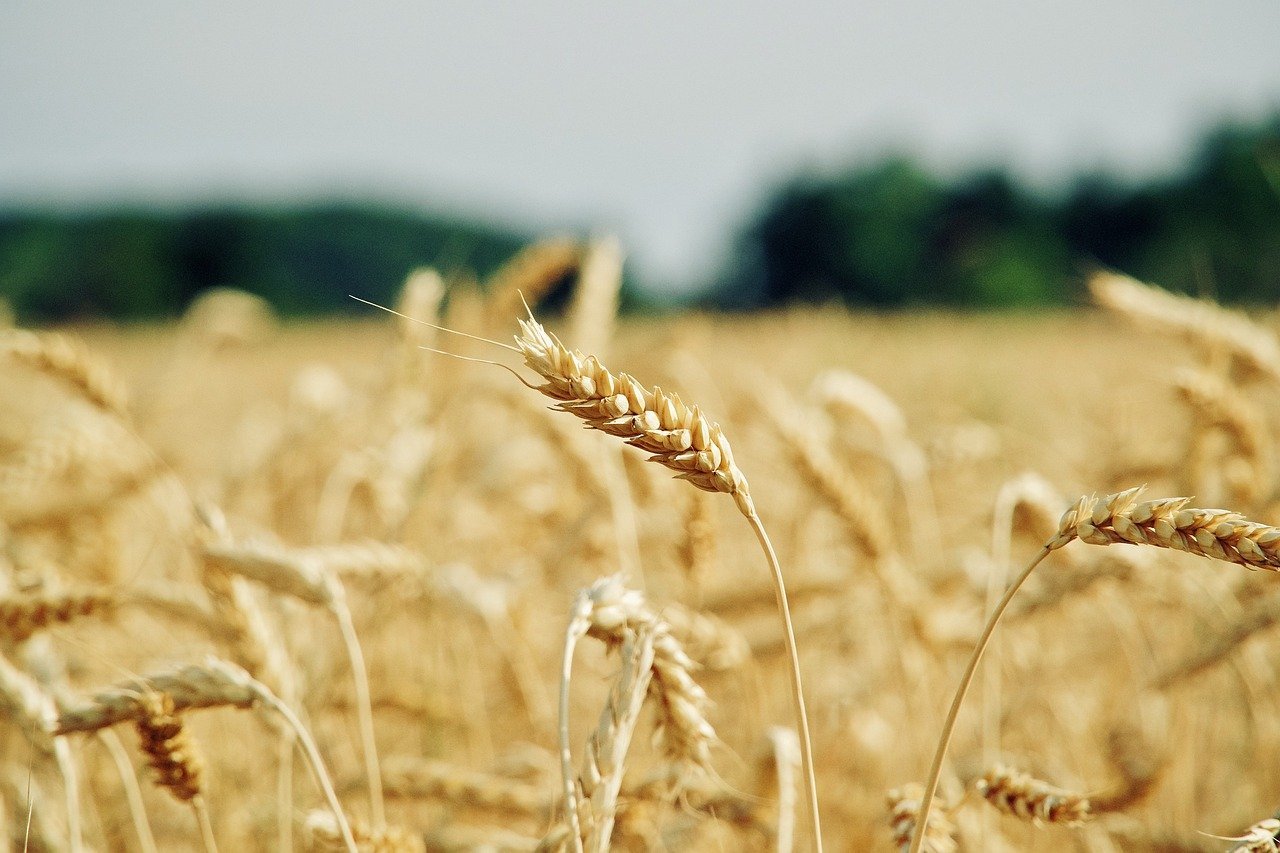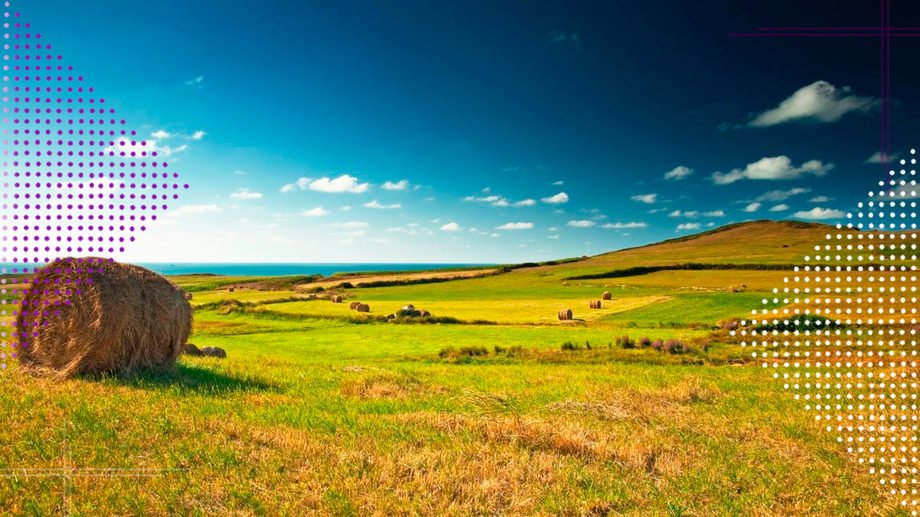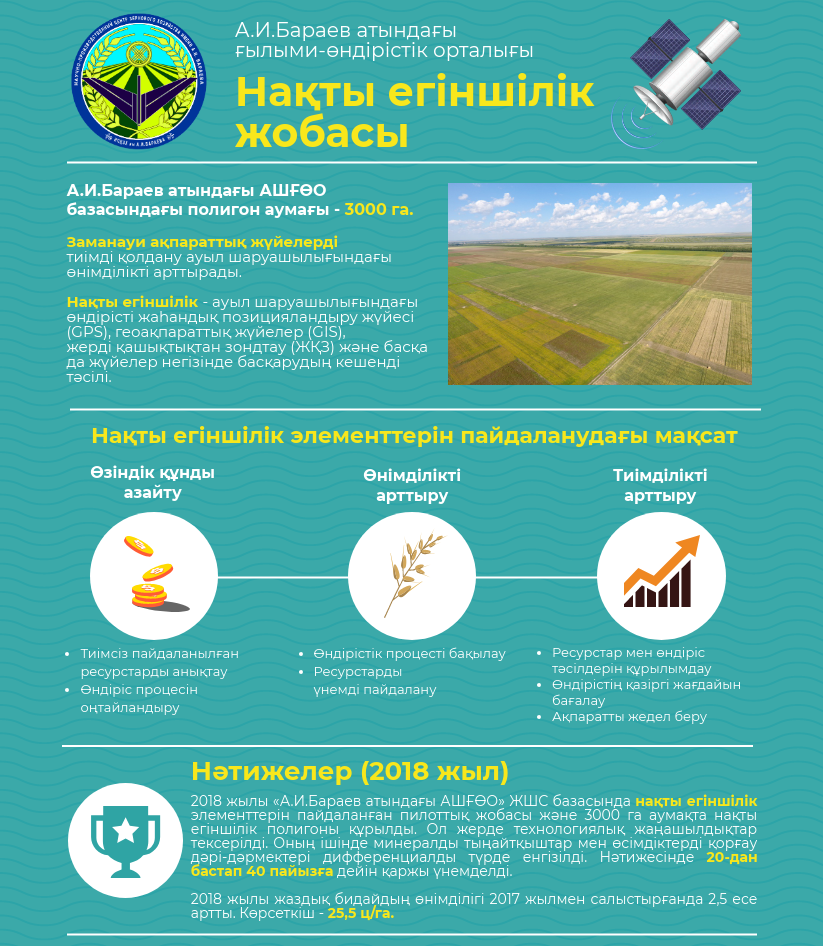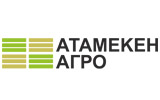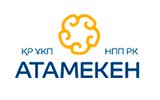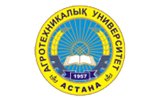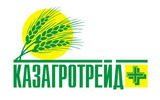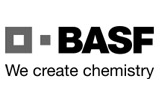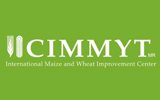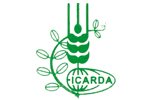The use of agricultural technology of wheat cultivation in a changing climate
News
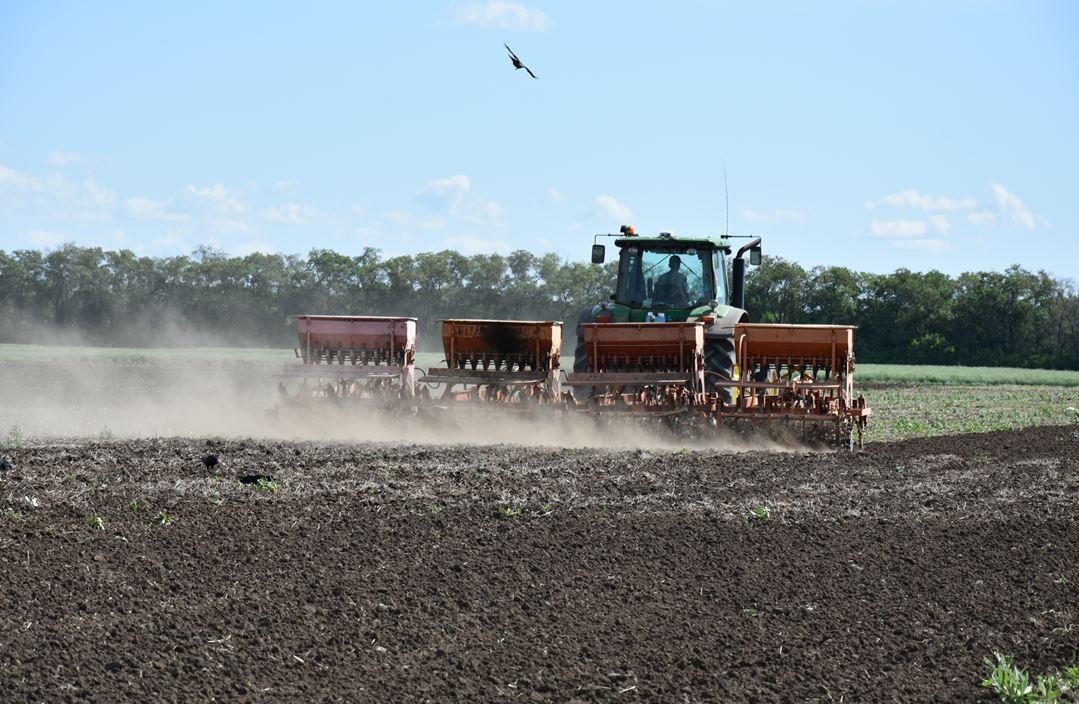
Climate change may lead to a decrease in the yield of grain crops. This could have serious implications for global food security, as agricultural crops are one of the main sources of nutrition. A decrease in yields can lead to an increase in food prices due to a shortage of supply.Therefore, it is necessary to understand the importance of further research in this area. Understanding the mechanisms through which climate change affects agricultural production and food security can help develop adaptive strategies and mitigation measures.A steady increase in the average annual air temperature is observed in all regions of Kazakhstan. According to the Ministry of Ecology and Natural Resources, the average increase in the average annual air temperature in Kazakhstan is 0.32 °C every 10 years. In turn, rising temperatures, changes in precipitation and more frequent extreme weather events strongly affect wheat production.
The sowing period is one of the key factors in the cultivation of agricultural crops, which has a profound impact on the course of wheat growth and development. The choice of the sowing period is an agrotechnical technique that allows plants to be placed during the entire growing season in certain growing conditions, which has a significant impact on their productivity. Especially in regions with limited water resources, such as Northern Kazakhstan, correct planning of the sowing period can significantly affect the yield and effective use of available moisture. Despite the fact that this issue is constantly in the focus of attention of researchers, it is increasingly necessary for production workers to return to it, as new-generation varieties are being created with varietal features slightly different from the previously common varieties.
Long-term studies conducted at the SPC GF named after A.I. Barayev indicate that there is no direct connection between the conditions that develop after snowfall and the optimal sowing period for spring wheat. According to the data obtained in the experiments of the Center, the maximum yield of spring wheat grain fell on the following dates: in 1969 – from May 20 to June 4, in 1972 – from May 10 to May 20, in 1987 - from May 20 to May 25, in 1993 – from May 10 to May 20, in 1996 in the year – from May 15 to May 30, in 2022 from May 5 to May 15 and in 2023 from May 20 to May 30. It follows from this that the optimal sowing period is determined to a greater extent by the distribution of precipitation and temperature during the growing season. Analysis of the influence of sowing dates on the yield of spring wheat showed that medium-ripened varieties with more than 50 years of observations formed the highest yield at the sowing period from May 20 to May 25, while higher-quality grain was obtained at sowing from May 15 to May 20. It was found that at the June maximum of summer precipitation, the sowing period does not significantly affect the yield level. With the July maximum precipitation, the optimal sowing time is from May 20 to May 30. With the maximum precipitation in August, only when sowing from May 25 to June 4, the highest grain yield is formed. However, when choosing the optimal period for sowing spring wheat, it is necessary to take into account the nature of the distribution of precipitation in summer that has changed in recent decades. For example, on average for 73 years, the maximum precipitation in June accounted for 30% of years, in July 44% and in August 26% of years. Observations of the amount of precipitation indicate that over the past decade, the number of years with maximum summer precipitation in June increased to 64%, and the number of years with maximum summer precipitation in July and August decreased to 27% and 9%, respectively.
Precipitation for 1936-2020 by periods, mm
(data of the SPC GF named after A.I. Barayevmeteorological post)
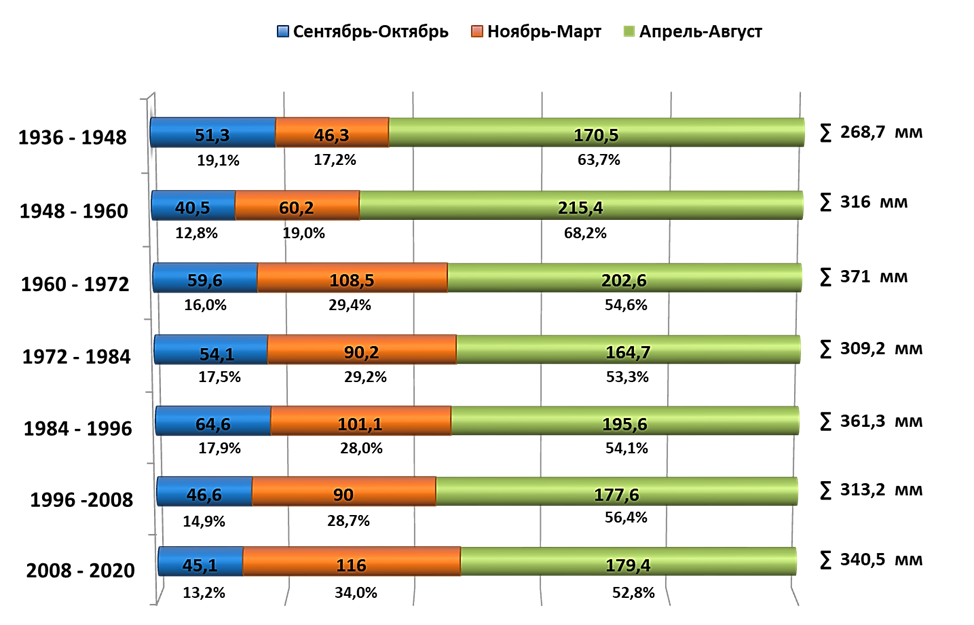 Taking into account the level of moisture availability, the forecast of climatic conditions of the summer period to obtain the maximum yield of spring wheat, optimal sowing dates should be followed: on ordinary chernozems - from May 14 to 24, on southern chernozems from May 16 to 26, dark chestnut soils - from May 17 to 27. When choosing the sowing dates, it is necessary to take into account soil moisture, clogging, the duration of the frost-free period, varietal characteristics, technical capabilities of the farm for sowing and harvesting. Sowing should begin with medium-late varieties, the second half of the optimal period should be used for sowing medium-ripened and medium-early varieties in the zone of southern chernozems and dark chestnut soils and medium-early in the zone of ordinary and leached chernozems.At the beginning of optimal sowing periods, seed plots are sown. At the end of the optimal time, it is necessary to sow more clogged fields after careful intermediate, pre-sowing mechanical treatment or after applying glyphosate-containing herbicides a few days before sowing. A farm that is unable to complete sowing in 8-10 days should start it a little earlier than the optimal sowing dates. It should be borne in mind that harvesting wheat later than September 20 usually causes greater damage to the harvest and grain quality than sowing produced earlier than May 15.
Taking into account the level of moisture availability, the forecast of climatic conditions of the summer period to obtain the maximum yield of spring wheat, optimal sowing dates should be followed: on ordinary chernozems - from May 14 to 24, on southern chernozems from May 16 to 26, dark chestnut soils - from May 17 to 27. When choosing the sowing dates, it is necessary to take into account soil moisture, clogging, the duration of the frost-free period, varietal characteristics, technical capabilities of the farm for sowing and harvesting. Sowing should begin with medium-late varieties, the second half of the optimal period should be used for sowing medium-ripened and medium-early varieties in the zone of southern chernozems and dark chestnut soils and medium-early in the zone of ordinary and leached chernozems.At the beginning of optimal sowing periods, seed plots are sown. At the end of the optimal time, it is necessary to sow more clogged fields after careful intermediate, pre-sowing mechanical treatment or after applying glyphosate-containing herbicides a few days before sowing. A farm that is unable to complete sowing in 8-10 days should start it a little earlier than the optimal sowing dates. It should be borne in mind that harvesting wheat later than September 20 usually causes greater damage to the harvest and grain quality than sowing produced earlier than May 15.From 2021 to 2023, the study of sowing dates continued (May 5, 10, 15, 20, 25, 30 and June 4) spring soft wheat in a stubble background, on the southern carbonate soils of Akmola region on the basis of “SPC GF named after A.I. Barayev” LLP within the STP BR10764908 “To develop an agriculture system for the cultivation of agricultural crops (cereals, legumes, oilseeds and industrial crops) using elements of cultivation technology, differentiated nutrition, plant protection products and equipment for cost-effective production based on a comparative study of various cultivation technologies for the regions of Kazakhstan”, according to the subject “Development, transfer effective technological schemes of cultivation of agricultural crops”.
In 2023, in most districts of Akmola region, the grain of spring wheat and other agricultural crops was formed in the absence of productive summer precipitation, high air temperature and the manifestation of hot days. The sum of effective air temperatures above 0℃, 5℃ and 10℃ exceeded long-term values by 14.8, 22.3 and 36.2%, respectively. The number of hot days above 35 degrees has increased. According to these indicators, the current year was drier compared to other years. In most fields, the reserves of productive moisture in the lower horizons of the soil during the ripening of grains are almost at the level of dead reserves.

Consequently, the comparatively maximum yield, depending on the timing of sowing, was formed at the time of sowing on May 20 and 30 – 7.5 c/ha. In 2021-2022, the highest yields from 13.8 to 19.1 c/ha were obtained during sowing in the period from May 5 to May 15.
In conclusion, it can be emphasized that the study of the influence of sowing dates on wheat yield is an urgent and important task in agriculture. The data obtained during the study indicate that the choice of the optimal sowing time can significantly affect the final result and crop yield.
The results of the study allow us to identify the optimal sowing periods in the conditions of the steppe zone, which provide the highest yield indicators. However, it is worth noting that the successful impact on yield requires an integrated approach, taking into account also the climatic features of the region, soil conditions and agricultural technology.
Therefore, correct planning of wheat sowing dates can be a key factor in achieving stable and high yields. In the long term, it also contributes to ensuring the food security of the region and the sustainable development of agriculture.
Thus, further research in this area is of great importance and can make an important contribution to improving the efficiency of agricultural production, as well as adaptation to changing climatic conditions.
Irmulatov B.R.,
Doctor of Agricultural Sciences
Akhylbekova B.A.,
Master of Agricultural Sciences
Nelis I.L.,
Junior Researcher


